Hardware Roundup April 2021
From new Arduino-compatible boards to vintage-inspired hardware, let’s take a look at some of the designs that caught our attention over the last month.
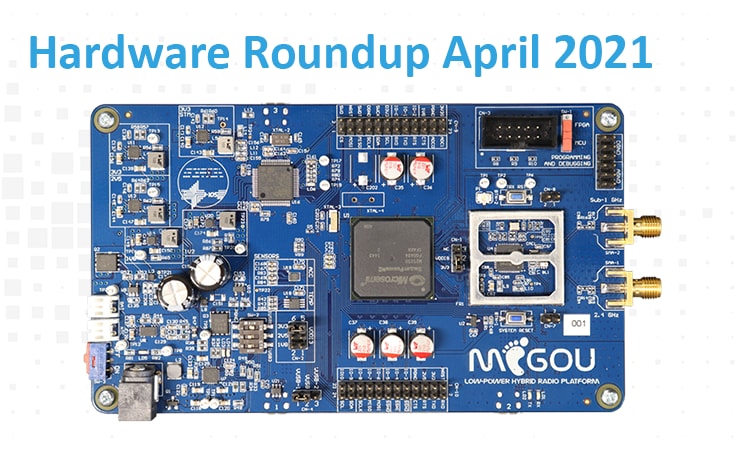
FortyTwo Systems MEGA / UNO
Hardware designer Dave Cutting has released a couple of new development boards meant to serve as drop-in replacements for some of Arduino’s classic form factors, the Uno and Mega, swapping out the 8-bit ATmega328 and ATmega2560 for the 32-bit SAMC21N18A. Both the FortyTwoSystems MEGA and UNO run at 5 volts, feature advanced communication peripherals, and boast many times more flash, RAM, operating speeds, and processing power than its inspired boards. In addition, the pair are equipped with dual CAN controllers, allowing them to interface with industrial devices. The FortyTwoSystems MEGA and UNO are compatible with the popular Arduino IDE as well as PlatformIO. Cutting is currently selling the boards on his Tindie store for $30-$35.
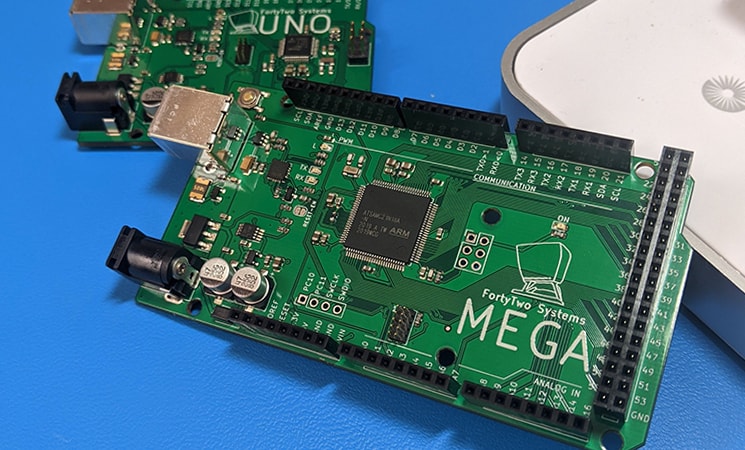
MIGOU
A Universidad Politécnica de Madrid research team led by PhD candidate Utrilla Gutiérrez has unveiled a low-power wireless platform for cognitive radio and edge computing experimentation. MIGOU combines the flexibility of software-define radios with the energy efficiency of hardware radios, providing users with the best of both worlds. To achieve this, the platform employs an AT86RF215 transceiver — similar to the TinySDR and iotSDR — along with the SmartFusion2 flash-based FPGA SoC. More details on the team’s impressive work can be found here.
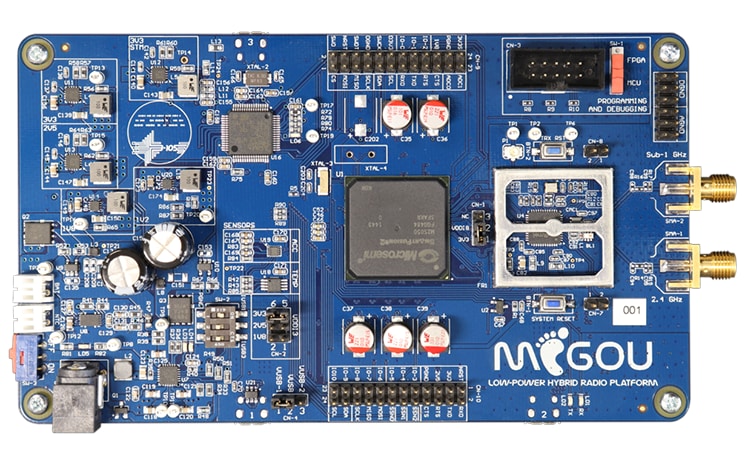 MintyCharger
MintyCharger
There are a number of 9V battery chargers on the market, though sadly many are just "dumb" chargers that simply provide a current-limited supply at a fixed voltage to the battery, and it's rare to find a professional charger that can properly juice up a PP3 rechargeable battery. To address this problem, the Innove Workshop Company devised a fresh take with the MintyCharger — a PIC16F18235-based USB charger that fits neatly inside an Altoids tin and supports all voltages ranging from 7.2V up to 9.6V. Documentation for the open source device is available on Innove Workshop’s website and being sold on Tindie for $18.50.
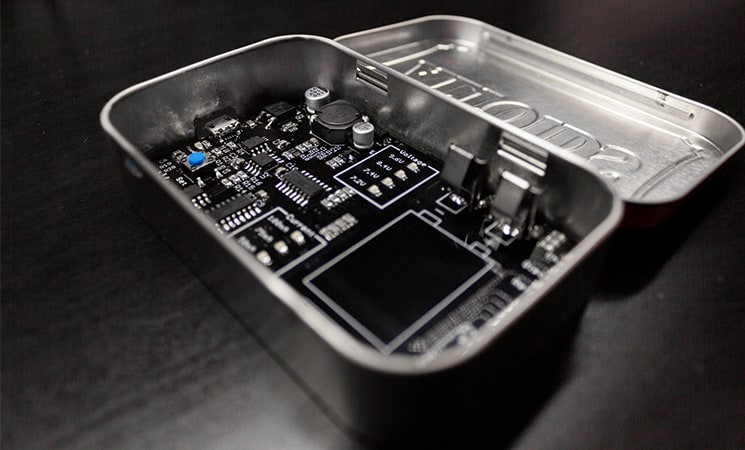
BM83 Bluetooth 5.0 Dual-Mode Development and Breakout Board
BurgessWorld Custom Electronics has launched a $45 breakout board for those looking to build Bluetooth 5 audio projects using the BM83 dual-mode Bluetooth audio module. This breadboard-friendly board offers access to every pin and feature of the BM83. It packs power and reset buttons, onboard status LEDs, a LiPo battery connector, a six-pin connector for an I2S codec/amplifier module with 25W maximum stereo output, a test mode header, 2A battery output, and a 5V charger connector. Users can easily configure the BM83 to their own specifications via Microchip's suite of development applications. What’s more, BurgessWorld has a full-fledged $70 development board as well.
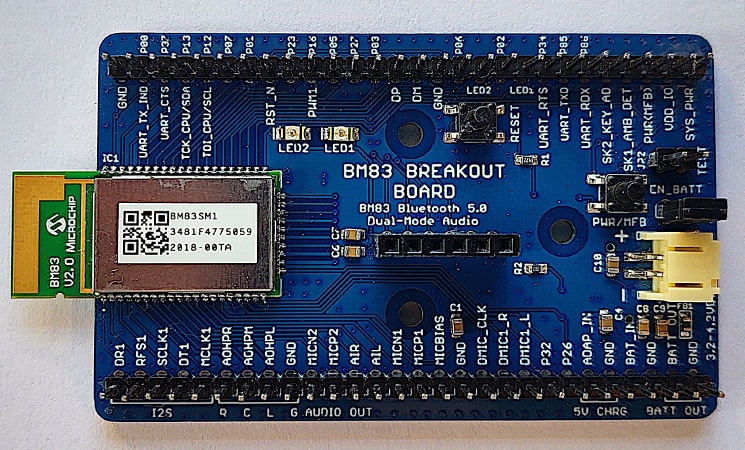
NTP-Based Digital Clock Panel Driver
Dilshan Jayakody has introduced an open source, ATmega328-based configurable NTP clock complete with a 2.3” seven-segment display driver. This clock automatically obtains time from the configured NTP server and updates the date and time of the built-in RTC. All the parameters of this clock can be set using its USB base serial terminal. The firmware of this clock supports both static and DHCP addressing modes. Apart from that, parameters such as NTP server address, time-offset, and clock display formats can be adjusted through the menu-driven configuration terminal. The board’s network component is built around the ENC28J6010BASE-T standalone Ethernet controller. More details can be found in Jayakody’s blog post.
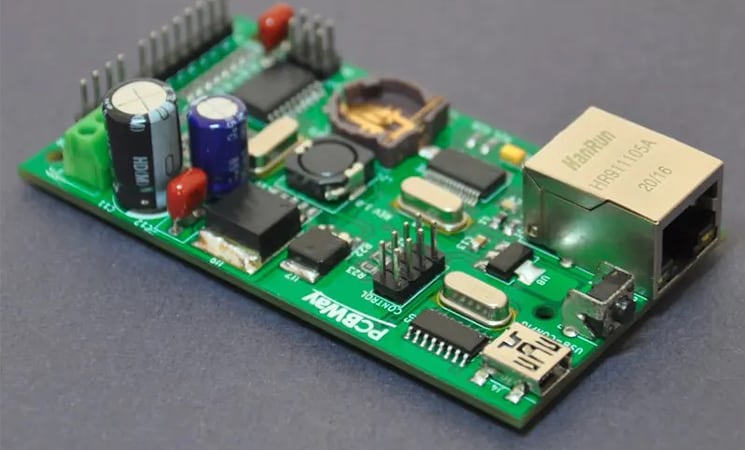
Scamp2
Australian engineer John Catsoulis has created a gumstick-sized, self-contained embedded Forth computer running on a PIC24F64GB202 with 64K Flash and 8K RAM — of which, Forth takes up only 20K of Flash and 2K of RAM. Not only is the board easy to use, but doesn’t require any IDEs, compilers or development tools as it comes pre-installed with the FlashForth stamp system, which has been implemented on a wide variety of PIC® and AVR® microcontrollers. Those wishing to learn be can check out Hackaday’s write-up.
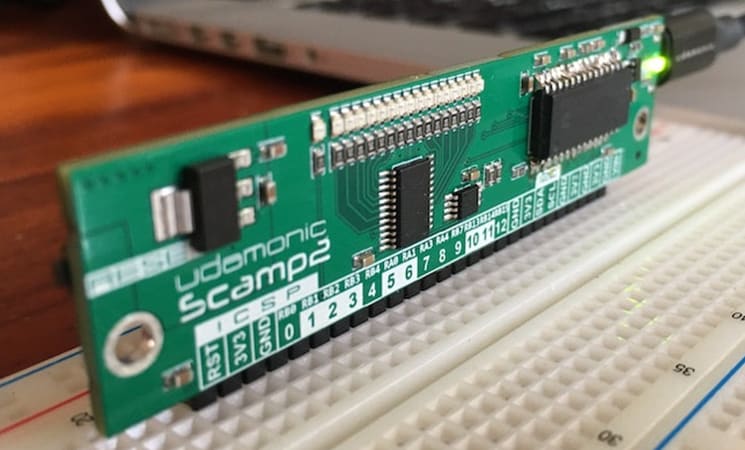
ANAVI Macro Pad 2
Coming soon to Crowd Supply as part of Microchip’s Get Launched program, the ANAVI Macro Pad is an open source 2% mechanical keypad based on an ATtiny85 running QMK firmware. Similar to its Macro Pad 8, the unit sporst mechanical switches and transparent keycaps with LED backlighting. Each of its keys can be reprogrammed, perfect for use with video conferencing applications. Various keymaps are available, including for Zoom, Jitsi, Google Meet, and Git. Want a macropad of your own? Check out Anavi Technologies’ campaign page to stay up-to-date.
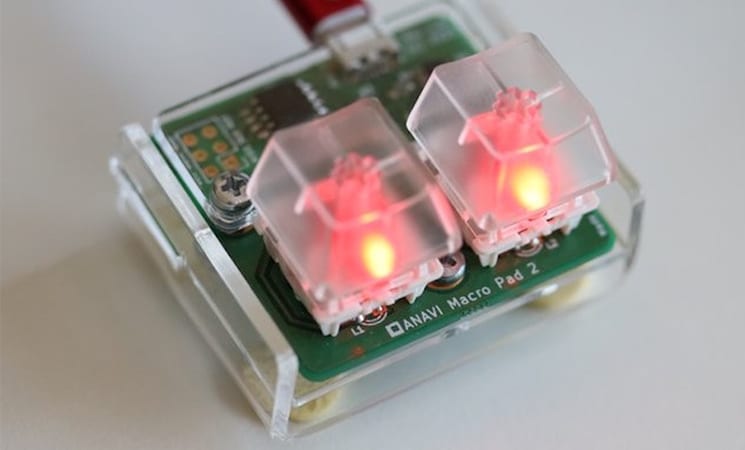
ELLO 1A
KnivD’s ELLO 1A is a retro-style "true single-chip computer" based on a PIC32 with a native C (not BASIC!) interpreter. The ’80s-inspired system sports a unique two-in-one design, enabling use of either through-hole or surface-mount components for assembly. You can delve deeper into the board’s specs in Hackster’s recent article or its project page on Hackaday.
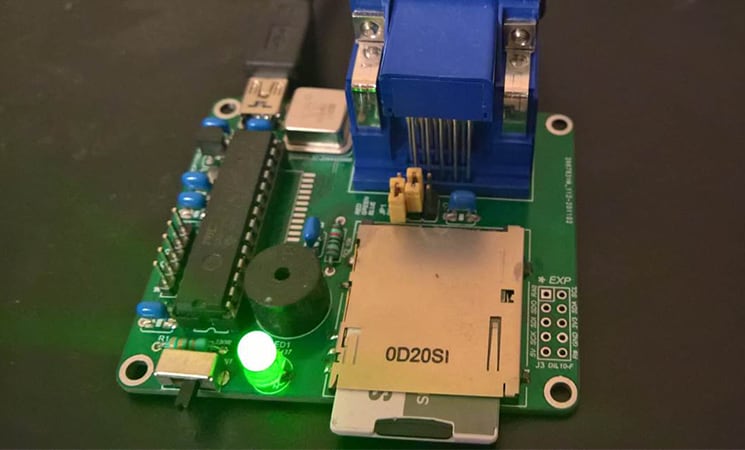
LiPo SHIM for Pico
Following the debut of the Raspberry Pi Pico, Pimoroni has come up with a low-cost and convenient add-on that lets you power your projects from a li-ion or LiPo battery. Solder this little square to the pins on the back of your Pico, plug in the battery, and voila! Outfitted with an MCP73831 PMIC, the LiPo SHIM for Pico can recharge its attached battery by supplying power to the Pico via USB, and it includes protection against overdischarging and overcurrent. The battery connects via a two-pole JST PH connector, and the power button can turn the device on and off or act as a reset button with a double press.
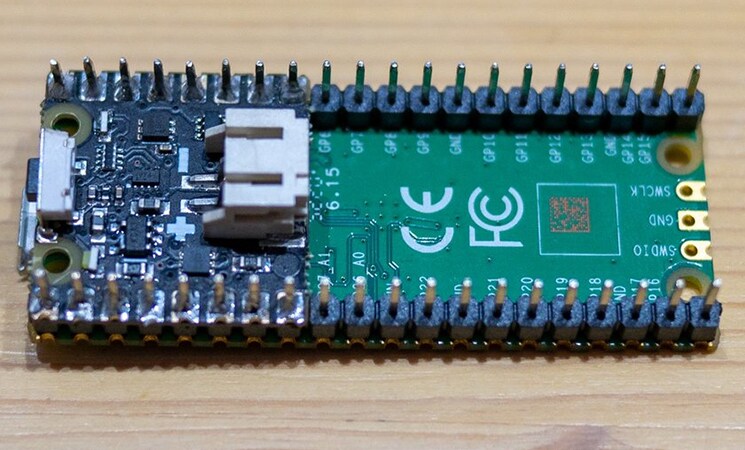
Pocket Piano
With an ATmega328P at its heart, sjm4306's custom PCB puts a little electronic piano in your pocket! The palm-sized device can play four channels of polyphonic squarewaves at once triggered by 13 capacitive touch keys.

SAM D11 Development Board
Stefan Wagner yet again makes the list, this time with a new development board for the ATSAMD11D14A featuring native USB, a 3.3V voltage regulator and support for Arduino IDE. The open source unit is available on GitHub and design files are up on EasyEDA.
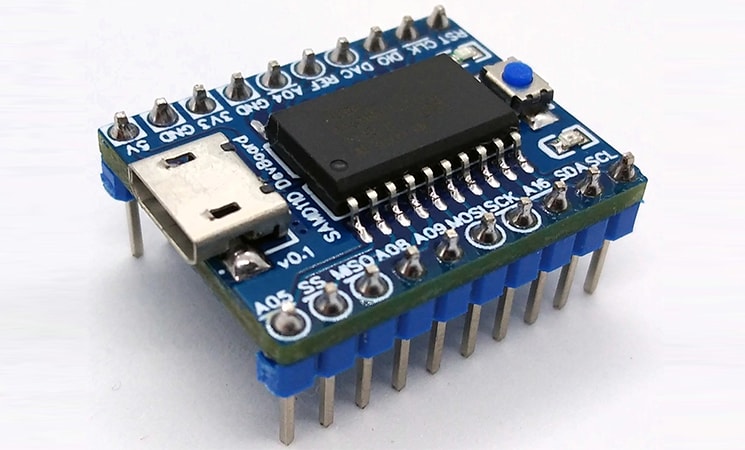
The Sleep Keeper
Patrick Thomas Mitchell has returned to Kickstarter campaign with his board, the Sleep Keeper, geared toward data logging applications and heart rate monitoring. The ATmega328-powered platform includes a microphone, a light sensor, a real-time cock, a microSD card socket for local storage, a header for a PIR motion sensor, an external heartbeat sensor that connects to a user’s finger via Velcro or finger clip, an audio library for speech output to a bundled speaker or 3.5mm jack, push buttons, and DIP switches.
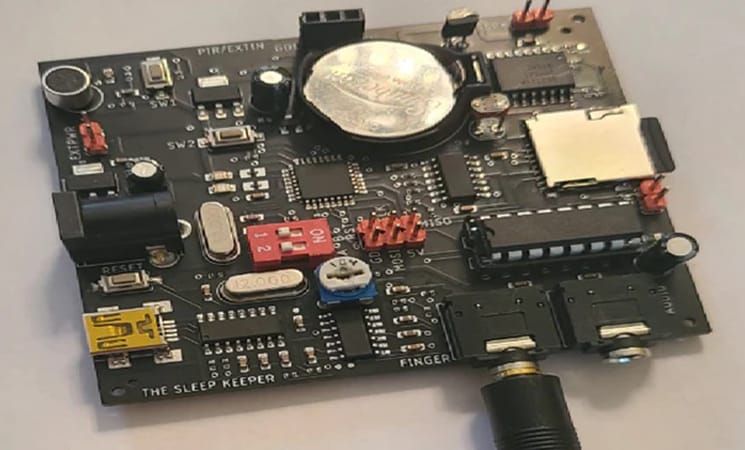
ATmega128P LoRa Node
IoT Devices has developed a low-power, low-cost LoRa node powered by the ATmega1284P — designed as a replacement for its ATmega328P-based rivals. This $15 gadget has a small form factor of just 36.5mm x 31.5mm and ultra-low power consumption (down to 0.56μA while waiting for wakeup) thanks to its integrated watchdog functionality. It supports wire, helical or SMA-connected antennas, and features I2C and 1-Wire pullups onboard, a TPS782 regulator, a voltage divider, an interrupt pin with pull-up resistor, and space for a reset button. IoT Device is currently selling the ATmega1284P LoRa Node starting at $16 on Tindie.
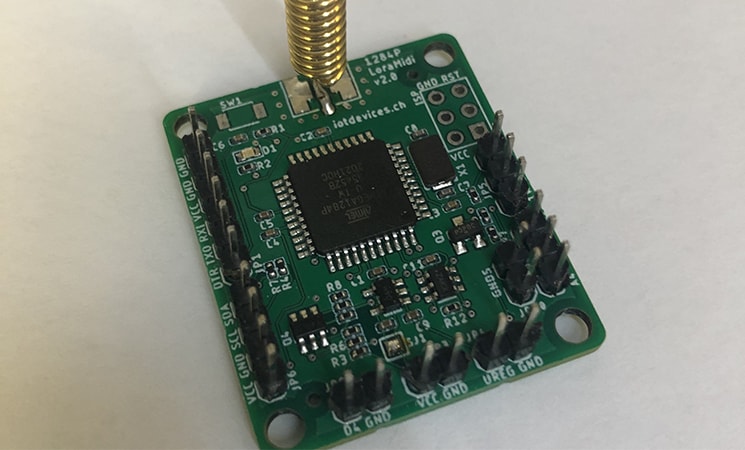
Arduino Datalogger
First spotted on Reddit, Valentin Bersier has shared a nifty board for logging temperature and humidity data to an SD card. What began as a fun weekend project, this PCB is equipped with an HDC1080 sensor, an RTC, a WS2812B RGB LED, and a CR2032 battery holder. Bersier has released the design files and schematics for those who want to recreate the datalogger.

Want to see more? Browse March 2021 Hardware Roundup month’s list here.